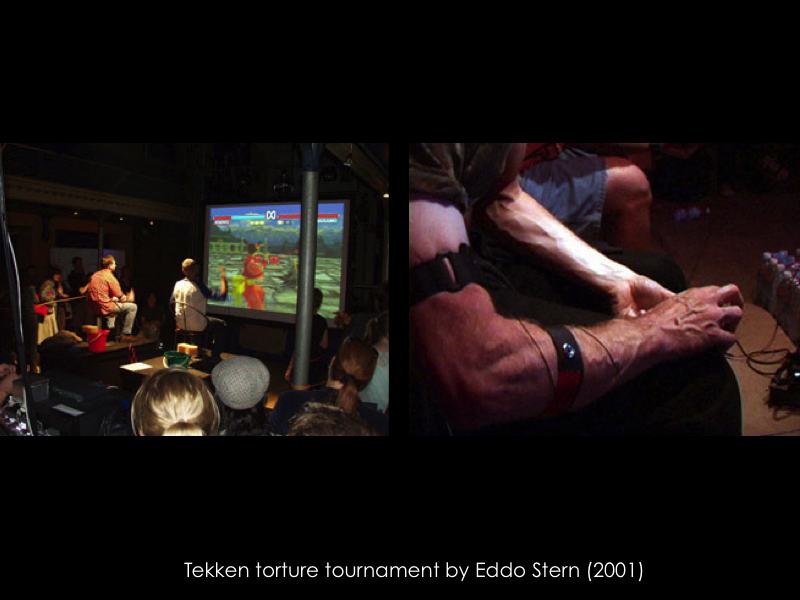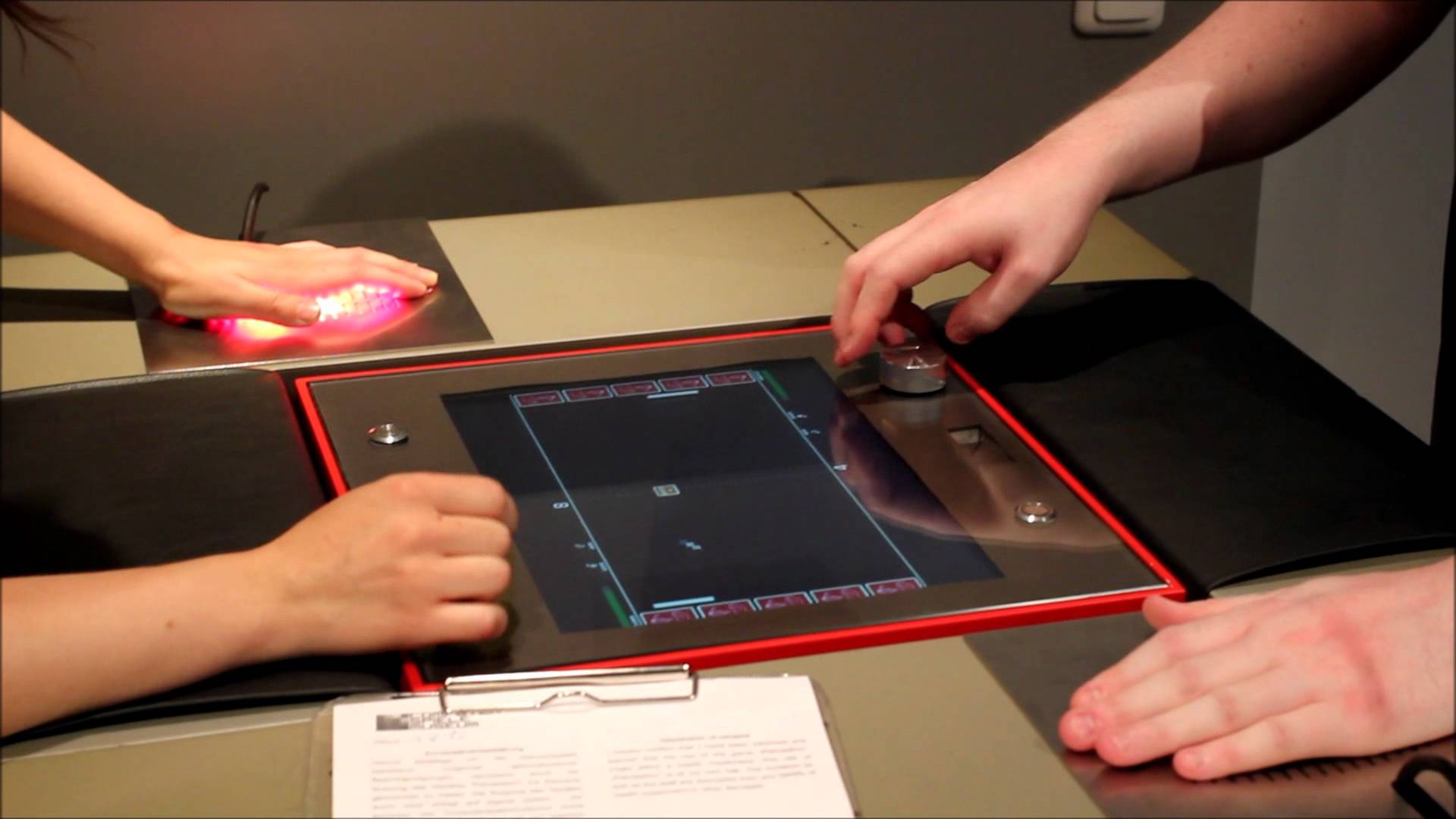
Most gamers are familiar with AAA releases -- the cinematographic FPS games, the enormous RPG titles, the thrilling horror productions and so on. There is, however, an alternative industry in gaming.
No, I am not referring to independent productions.
Some fans and developers use video games for various purposes other than entertainment. They conduct experiments with gaming.
Today we will look at five bizarre experiments involving video games. They range from using games to test how far the human body can withstand punishment, to scientists using a new technology to stream a game directly to a person's brain.
Welcome to a side of gaming you perhaps did not know existed.

Tekken Torture Tournament
Have you ever questioned what a character in a fighting game feels? This experience is the closest you can get to an answer.
Eddo Stern and Mark Allen created an event, in which volunteers played Tekken, whilst wearing a device in their arms that administered a non-lethal, yet painful, electric shock each time the player received a hit from the opponent.
The shocks were intense enough to interfere temporarily with the functions of the muscle of the player's arm, thus affecting mobility and making it harder to play the game.
As the author Katherine Isbister writes in her book How Games Move Us: Emotion by Design:
"They [the shocks] mimicked the delays avatars experience in-game after being dealt a heavy blow. Players had to sign an intimidating release form, but nonetheless participated in the tournament, as it toured art venues in the United States, Israel, Australia and the Netherlands."
While this experiment may seem brutal, it gets nowhere near the intensity of the next in this list.

The PainStation
As the previous experiment shows, videogames are not always harmless, but this custom built console takes the pain of defeat to new levels, as it combines the game Pong with a torture machine.
Volker Morawe and Tilma Reiff, the designers of the experience, nicknamed it PEU (Pain Execution Unit).
As volunteers played a match of Pong, they needed to control the game with their right hands and place their left hands on a metal surface, which would heat up, emit electric shocks and pop out a wire to cut the hand of the loosing player.
If a player removes his/her hand from the metal surface, he/she loses the game immediately.
Katherine Isbister, in her book How Games Move Us: Emotion by Design, describes the experience of watching a match and also reveals the objective of the experiment:
"It was a mesmerizing and horrifying demonstration on how physical stakes can radically shift the emotion and social tenor of the play experience."
Since 2011, the game became a permanent exhibition at the museum Computerspielemuseum Berlin, in Germany. Any visitor older than 18 can play it.
The last two experiments focused on the designers finding ways to inflict pain on the players, but the next one offers a reversal of roles.

Domestic Tension
Born in Iraq, the artist Wafaa Bilal experienced firsthand the horrors of the civil war in the Middle East.
He lived in a refugee camp during the rule of Saddam Hussein and lost members of his family in the conflict.
In 1992, he moved to the United States of America, but the psychological harm inflicted on him by the conflicts in his home country lingered.
In order to raise awareness to the innocent blood being spilled in the Middle East, he created an experimental game called Domestic Tension.
The experience started in May, 2007 and took place at FlatFile Galleries in Chicago, where he confined himself in a room for 30 days, under the watch of a paintball gun.
The weapon was connected to the internet and players who registered on the website of the game took turns to control the gun and shoot Wafaa with paintballs at almost point blank range.
The aim was to represent the fragility of the lives of innocent people caught in the crossfire of the conflicts in the Middle East, as at any moment, a bullet from a gunfight occurring nearby could enter a home and kill an innocent person. The idea of the experiment was to use this game to represent this reality to those who were oblivious to it.
According to Mary Flanagan in her book Critical Play: Radical Game Design:
"During the month-long exhibition, the site received eighty million hits, and sixty thousand paintballs were shot."
This list has shown you experiments with a dark tone, but unlike the previous experiences in this article, the next one has a kindhearted feel.
Cruel 2 Be Kind
Designed by Jane McGonigal, the author of Reality is Broken: Why Games Can Make Us Better and How They Can Change the World, the idea behind this experimental game is to lighten up the mood of big cities, by displaying acts of kindness towards strangers in the streets.
The game consists of two teams, ranging from five to ten players, but each team is oblivious to the appearance of the members of the enemy squad.
Before starting the game, an area for the match to be held within is selected. A particular street or a building, for instance.
In order to eliminate the member of the enemy team, players must show an act of kindness towards them -- a compliment or a hung, for instance.
The team that gets eliminated first looses. The problem; however, is that, as previously stated, the players do not know how the enemies look, meaning that they must find them through trial and error, resulting in a lot of strangers who are not part of the game receiving compliments.
You can read the full rules on the official website.
Players arrange the game through text messages and e-mails, thus mixing the virtual world with the real one since it was announced in 2006.
While relying on the virtual world, this experiment focuses more on real life. The next one in this list; however, feels as an idea from a sci-fi movie.

Streaming a Game to a Person's Head
On December 8, 2016, we from GameSkinny published an article about a study conducted by researchers of the University of Washington, in which they succeeded in literally making people play a game in their heads.
The game in question was a simple 2D maze and by applying electrical impulses to the brain of the volunteers they were able to make them see and play the game in their minds.
Many volunteers were able to travel through the maze using only their minds, as the experiment reached a success rate of 92%.
You can read the full research writeup for more details about the study.

Conclusion:
As the examples displayed in this list show us, the video game industry offers more than just AAA and indie titles.
Bizarre experimentation can occur in gaming, ranging from the PainStation directly cutting someone's hand, to volunteers playing video games in their minds through electric pulses applied directly to their brains.
As technology counties to become more sophisticated, the tendency is for artists and researchers worldwide to continue pushing gaming to its limits, even if that means using games in unorthodox ways.
Let the games begin.






Published: Jan 8, 2017 03:45 pm